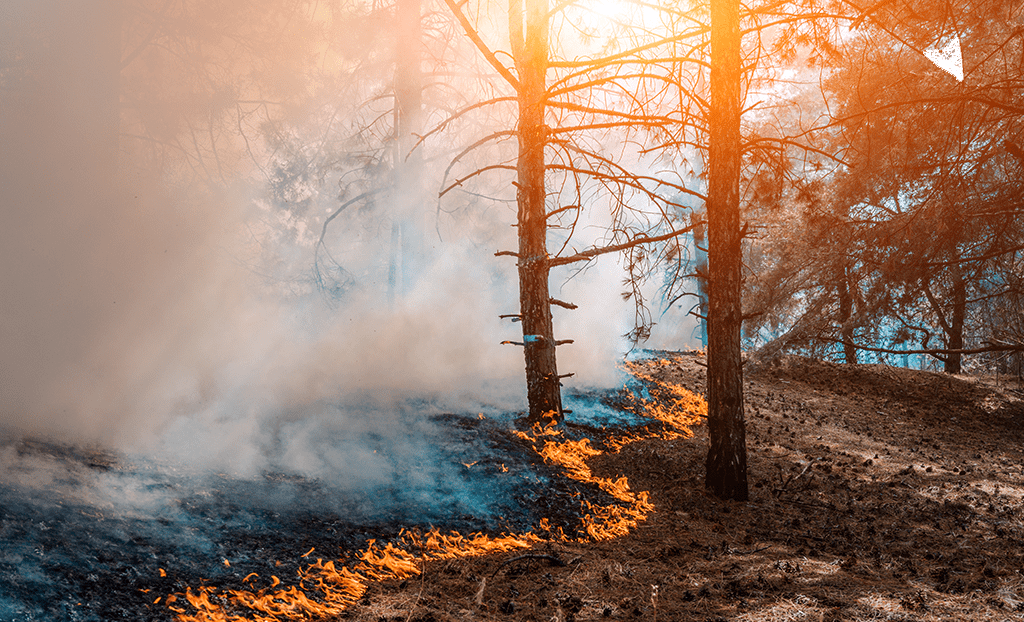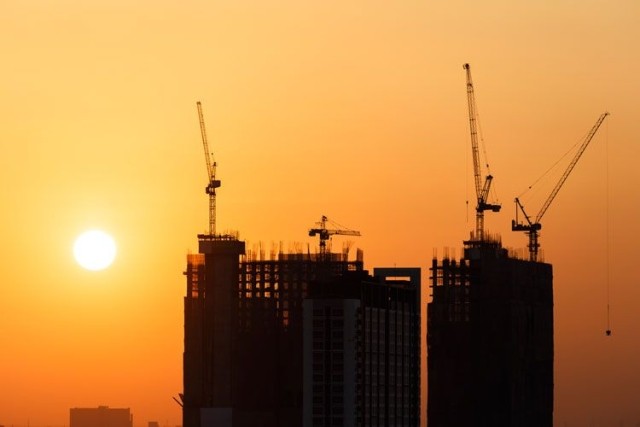Blog
Wildfire Season Insurance: Prepare Your Business Property Now
With the likelihood of wildfires, analyze your risk, protect, and insure your business with the three steps to take now before the weather heats up.
In a report issued on April 1, 2020 the National Interagency Fire Center (NIFC) predicted that weather patterns are shaping up for above-average wildfire activity for the coming year. That means that 2019, which brought a welcome respite from the devastating fires of the previous two years for much of the nation, could have been a mere lull before another storm. With the likelihood of more events, it's more important than ever to analyze your risk, protect, and insure your business from wildfire.

In 2019, about 2.2 million acres burned in the United States. By contrast, 8.8 million acres burned in 2018 and 10 million acres burned in 2017. The NIFC says the marked decrease in destruction last year was probably due to more substantial rainfall, but that climate change and dry vegetation are combining with weather patterns for an increased threat in 2020.
Before 2017, most business owners did not worry too much about the threat of wildfire to their commercial property, since the majority of destruction occurred predominantly in remote areas. All that changed with the ferocious wildfires of 2017 and 2018—especially the deadly Camp Fire, which burned homes, businesses and even a hospital in Paradise, California. That November 2018 fire became the most destructive and the deadliest wildfire in California history and the most costly natural disaster in the world that year in terms of insured losses.
So how can you protect your business property from the threat of wildfire? Let's examine three steps to take now before the weather heats up, and the risk of wildfires increases.
1. Lower Your Risk
The Camp Fire demonstrated how quickly a wildfire can move into a downtown business area. Sparks can spread rapidly, igniting trees and landscape material. To reduce the risk of loss to your property, conduct a thorough inspection of the surrounding area, clearing away debris, weeds, grasses, overhanging branches, and bushes to make a defensible space around your building.
We know now that power lines ignited the Camp Fire. As a result, the Pacific Gas and Electric Company in California is shutting off power when high winds and low humidity create conditions that are ripe for a wildfire. You can prepare for the interruption of business that these shut-offs cause by purchasing a generator. Another option is to install solar-powered battery walls to help keep things running when the utility shuts off power. We will discuss more methods for lowering your risk in future Property & Casualty wildfire insights, but inspecting your property and securing your power sources are two primary methods of lessening the impact of fires.
2. Understand Your Policy
In 2017 and even more so in 2018, wildfires began to impact commercial areas, so commercial property insurers started paying out large claims for wildfire losses. As a result, some insurance companies are reaching their aggregate capacity (total portfolio limits) limits of property that they are willing to insure in wildfire prone areas. Therefore, they are raising their property insurance premiums to cover that risk. Some companies may not offer property insurance at all in certain high risk areas.
We recommend that businesses check their policies and be careful of their coverage when it comes time for renewal. As the threat of wildfires increases in some areas of the country, you may find that your insurer is no longer willing to provide you with coverage.
If your commercial property is at risk, you'll want to make sure you understand how much coverage you have. Coverage varies by your geographic location and by your specific plan. For example, find out if your business property is covered for the following:
- Smoke damage
- Landscaping destruction
- Loss of furniture and equipment
- Product/inventory loss
- Vehicle damage
- Employee property loss
- Business interruption coverage
- Rental of a temporary space while your building is being rebuilt or repaired
3. Consider Your Wildfire Insurance Options and Costs
Insurance companies offer insurance based on perceived risk. If your insurance company does not renew your policy and you are unable to obtain standard coverage, you can consider the California Fair Plan insurance option. The California Fair Plan provides coverage for hard-to-insure (wildfire exposed) homes and commercial buildings. However, the limits of the Fair Plan may not be sufficient for your business. The limit for commercial properties is $3 million for structures and $1.5 million for all other coverages for a combined $4.5 million limit for all commercial properties at the same location. Also, the Fair Plan does not cover everything that a standard commercial insurance policy covers.
Amidst the tumult of 2020, no one wants to think about spending more money. However, maintaining adequate coverage for the risk of wildfire is increasing in cost. If your standard policy no longer covers your at-risk location, you may need to purchase coverage through the Excess & Surplus lines (E&S) market. Because of their very nature—insuring property that is at increased risk—E&S options are more expensive than standard policies. Some companies may find their insurance coverage costs double if they have to go this route.
Good News in Wildfire Insurance
Is there any good news mixed in with this bad news about wildfire and wildfire insurance coverage? Yes, there is. The past few years have heightened our awareness of the dangers of wildfires. Smart business owners are looking for ways to minimize their risk. They are paying more attention to their landscaping and to building construction materials. They are establishing a defensible space around their buildings that can both protect their structures and help prevent the spread of the fire.
It is likely that some states, such as California, will require new buildings to be built with fire-deterrent or fire-resistive materials that help reduce risk. Since research has shown that embers blown by the wind cause most of the fires that burn down buildings, changes in roof building codes may be part of the future. These possible building code requirements could be compared with what some cities like San Francisco require to withstand potential earthquake damage or that some Florida cities require to mitigate hurricane damage.
As the insurance industry moves forward on its handling of wildfire coverage, insurance companies may require on-site inspections to ensure that their business clients follow any new wildfire guidelines.
Education is Key to Reducing Your Wildfire Risk
Wildfires are so much more than an insurance issue, though. They affect homes and families. They disrupt lives and, tragically, they take lives, too. During some of the terrible fires of 2017 and 2018, schools and businesses were closed. Air quality was hazardous. Preventative action is the key to keeping our business and residential properties safe and protecting our loved ones.
We want to educate our clients about their wildfire risk. For example, even though your property hasn't moved, and you have been covered for wildfire damage for years, that situation may have changed. Newly-designed wildfire maps now may place your location in an at-risk zone. It's crucial that business owners take the time to learn about their current coverage and investigate their options. To learn more about how you can protect your property during wildfire season, subscribe for more relevant insights and reach out to your account executive to discuss lowering your risk.
Table of Contents











